A Level Biology: Cell Division, Mitosis, Meiosis & Stem Cells
1/144
There's no tags or description
Looks like no tags are added yet.
Name | Mastery | Learn | Test | Matching | Spaced |
|---|
No study sessions yet.
145 Terms
What is the cell cycle?
The regulated sequence of events that occurs between one cell division and the next.
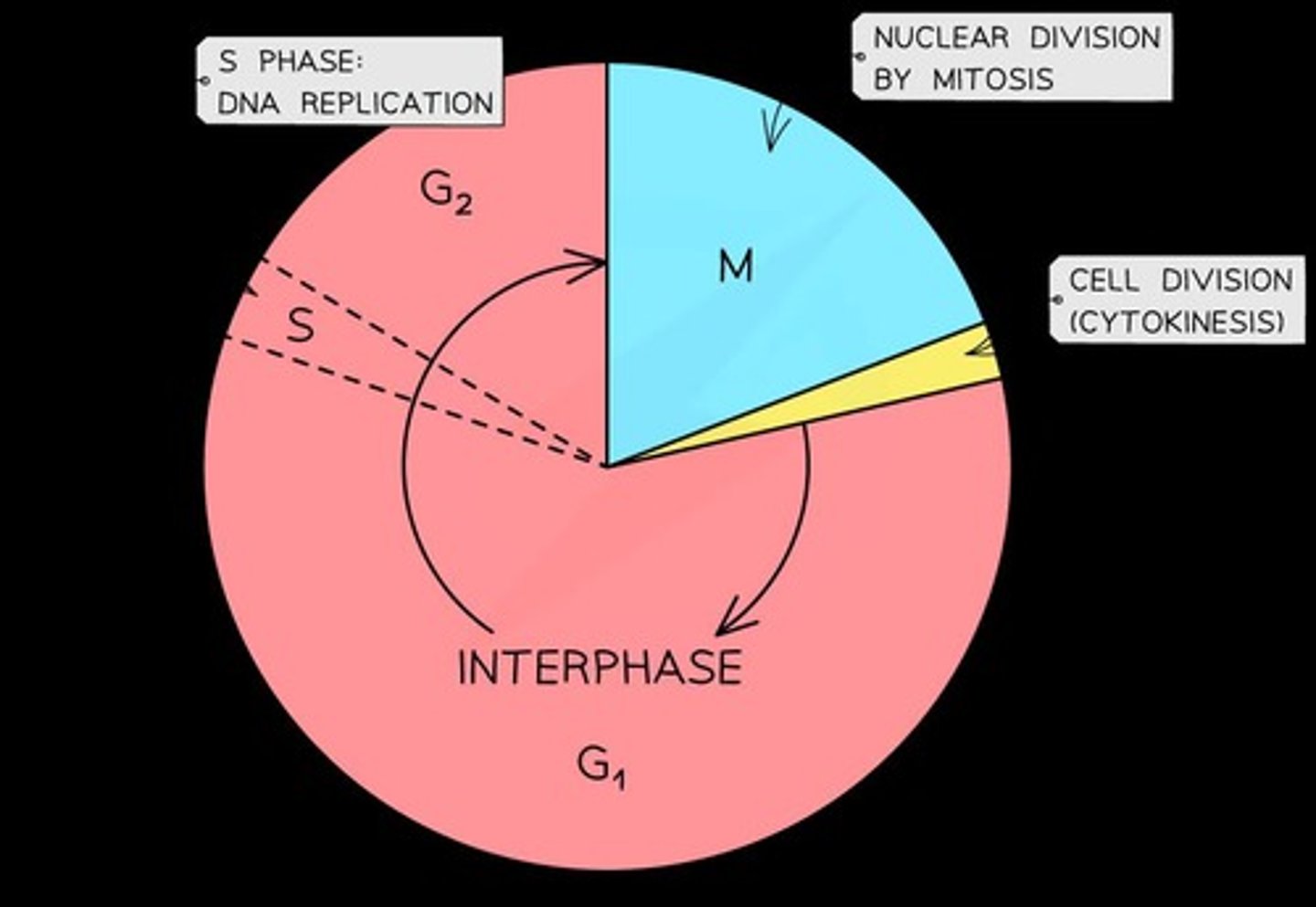
What are the three main phases of the cell cycle?
Interphase, nuclear division (mitosis), and cell division (cytokinesis).
What triggers the movement from one phase of the cell cycle to another?
Chemical signals called cyclins.
What occurs during interphase?
The cell increases in mass and size, synthesizes proteins, and replicates its DNA.
What does the 'S' in S phase stand for?
Synthesis (of DNA).
What happens during the G1 phase of interphase?
The cell grows and synthesizes RNA, enzymes, and proteins required for growth.
What is the role of checkpoints in the cell cycle?
To check for errors in DNA replication and ensure the accuracy of genetic information.
What happens during the G2 phase of interphase?
The cell continues to grow and checks the newly synthesized DNA for errors.
What is the M phase in the cell cycle?
The phase where mitosis occurs, leading to the division of the nucleus.
What is cytokinesis?
The process that follows mitosis where the whole cell divides to form two genetically identical daughter cells.
What occurs during prophase of mitosis?
Chromosomes condense and become visible, the nuclear envelope breaks down, and spindle fibers emerge.
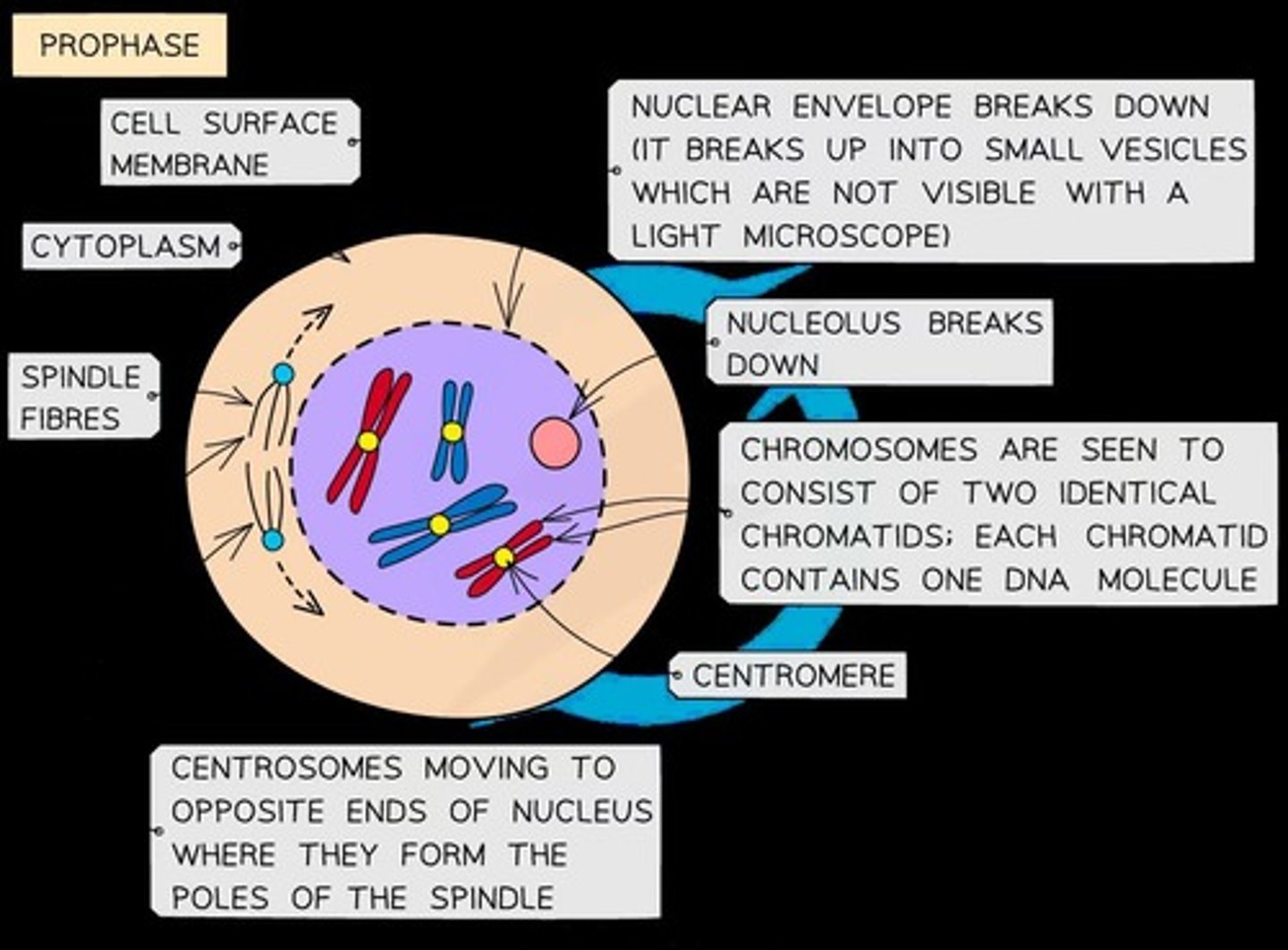
What happens during metaphase of mitosis?
Chromosomes line up at the equator of the spindle, and spindle fibers attach to the centromeres.

What is the significance of the anaphase stage in mitosis?
Sister chromatids are pulled apart to opposite poles of the cell.
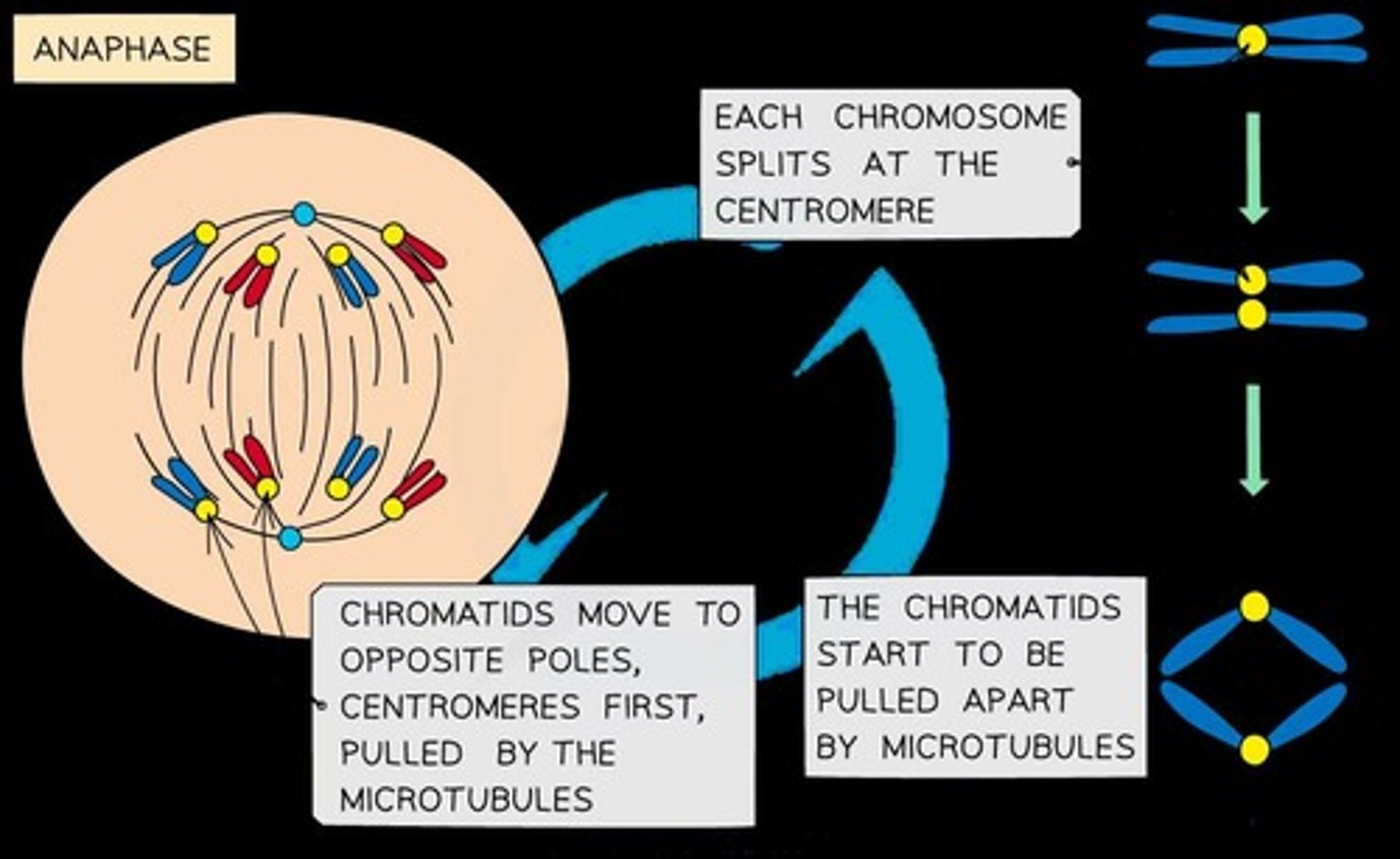
What occurs during telophase of mitosis?
Nuclear envelopes reform around the separated sister chromatids, now individual nuclei.
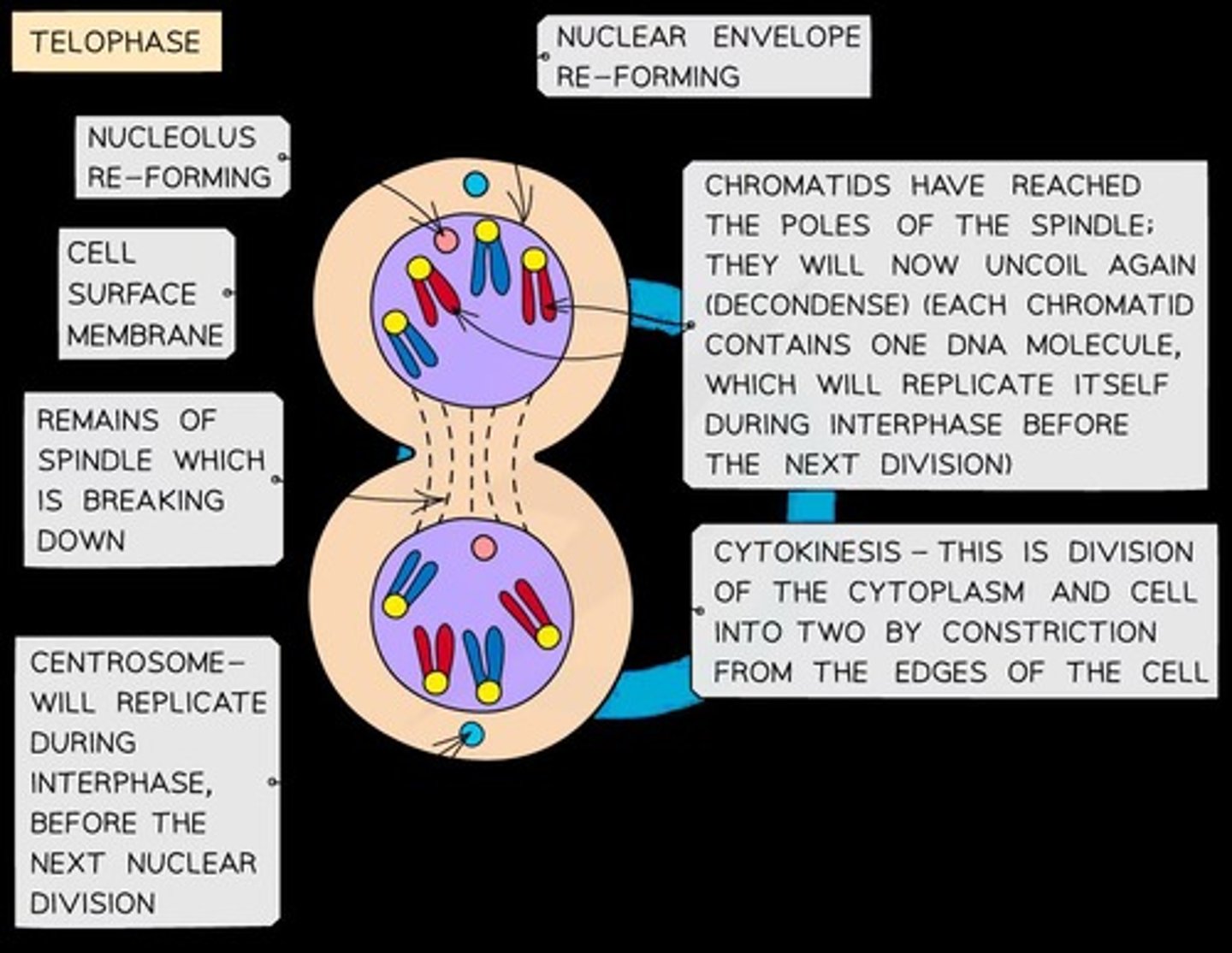
What is the role of kinetochores during mitosis?
They are specific proteins that attach spindle fibers to the centromeres of chromosomes.
How does cytokinesis differ in plant and animal cells?
In animal cells, it involves constriction of the cytoplasm, while in plant cells, a new cell wall is formed.
What is the purpose of proofreading enzymes during the cell cycle?
To check for and repair errors in replicated DNA.
What is the approximate division time for onion root tip cells?
Once every 20 hours.
What is the approximate division time for human intestine epithelial cells?
Once every 10 hours.
What happens if DNA damage is detected during the G1 checkpoint?
The cell does not advance to the S phase until repairs are made.
What occurs if chromosomes are not fully replicated during the S phase checkpoint?
The cell cycle stops until all chromosomes are successfully replicated.
What is the final check during metaphase before anaphase?
To ensure that chromosomes are correctly attached to the spindle fibers.
What is the significance of stem cells in cellular organization?
Stem cells have the ability to differentiate into various specialized cell types.
What are specialized cells?
Cells that have specific functions and structures adapted to their roles in the organism.
What is the main purpose of mitosis?
To produce two genetically identical daughter nuclei from a parent nucleus.
What happens during anaphase of mitosis?
Sister chromatids separate at the centromere and are pulled to opposite poles by spindle fibres.
What mnemonic can help remember the stages of mitosis?
'PMAT' stands for Prophase, Metaphase, Anaphase, Telophase.
How many DNA molecules are present in a human parent cell before mitosis?
92 DNA molecules, as the 46 chromosomes replicate to form sister chromatids.
What is the significance of mitosis in multicellular organisms?
It enables growth, replacement of cells, and repair of tissues.
What is a key difference between mitosis and meiosis?
Mitosis results in diploid cells, while meiosis produces haploid cells.
What is a bivalent in meiosis?
A pair of homologous chromosomes that are closely aligned during prophase I.
What occurs during prophase I of meiosis?
DNA condenses into visible chromosomes, and homologous chromosomes form pairs, allowing crossing over.
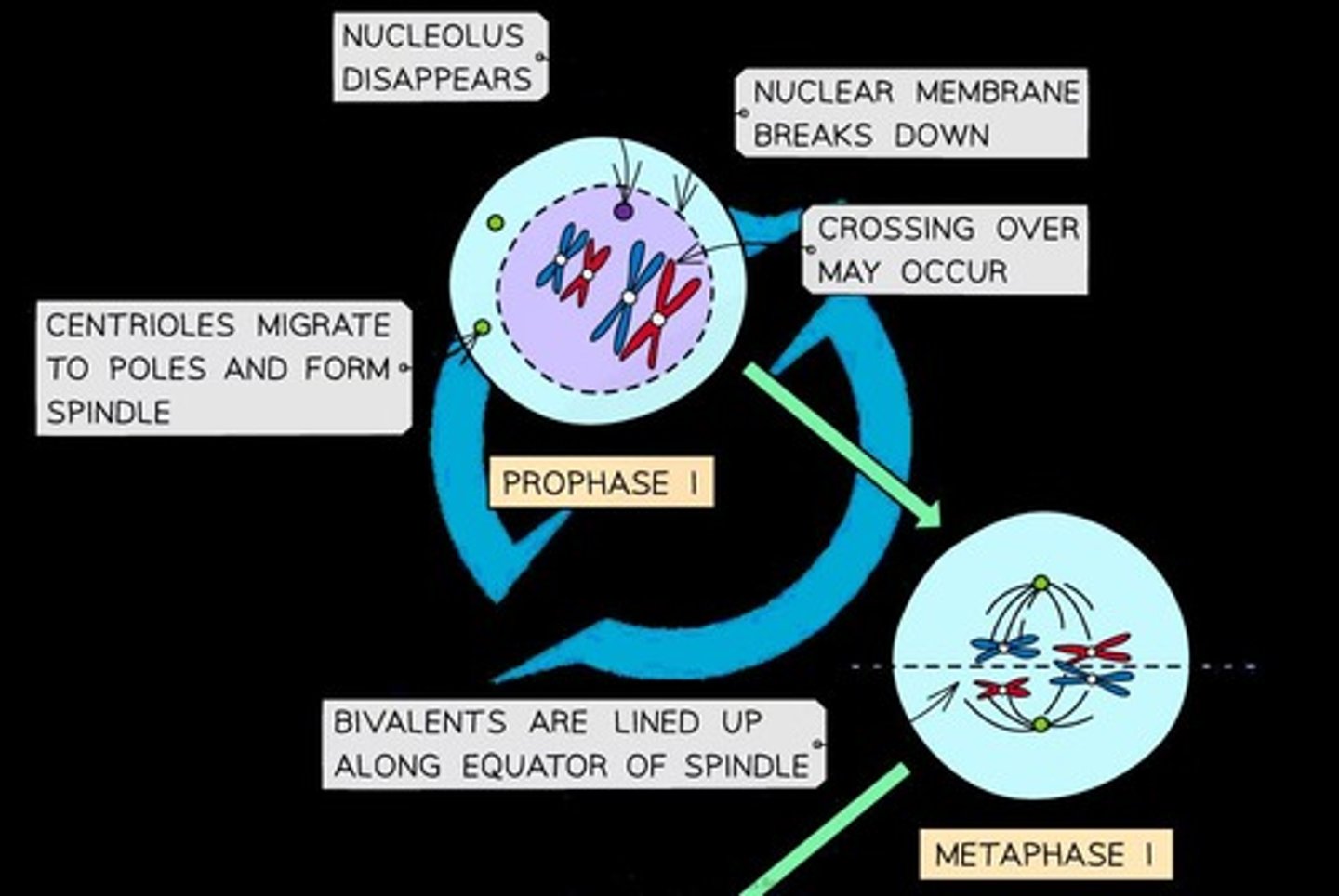
What is the role of meristems in plants?
Meristems are regions of growth where mitosis occurs, particularly in root tips.
What is the squash technique used for?
To prepare root tip slides for observing cells undergoing mitosis.
What is asexual reproduction?
The production of new individuals from a single parent organism, resulting in genetically identical offspring.
How can you identify telophase in a cell?
By observing multiple nuclei within one cell, indicating that the cell is undergoing telophase.
What is the significance of cell replacement in humans?
It is crucial for repairing damaged tissues and maintaining healthy skin and gut lining.
What type of cells are produced at the end of meiosis?
Haploid gametes that are used in sexual reproduction.
What is the main function of spindle fibres during mitosis?
To pull the separated sister chromatids to opposite poles of the cell.
What happens to the spindle fibres during telophase?
The spindle fibres break down as the cell prepares to complete division.
What is the role of crossing over in meiosis?
It increases genetic diversity by exchanging genetic material between homologous chromosomes.
What is the diploid number of chromosomes in human cells?
46 chromosomes.
What is the difference between prophase and telophase?
Prophase involves chromosome condensation and pairing, while telophase involves decondensation and nuclear envelope reformation.
What is the most common plant used to study mitosis in root tips?
Garlic or onion (Allium cepa).
What is a limitation of using optical microscopes for observing mitosis?
They may not have sufficient magnification to see all cellular structures.
What is the result of mitosis in terms of chromosome number?
The daughter cells maintain the same chromosome number as the parent cell.
What is the role of nucleoli during telophase?
New nucleoli form within each nucleus as the cell prepares for its next phase.
What is the point at which crossing over occurs called?
Chiasma (plural: chiasmata)
What happens to centrioles during meiosis?
Centrioles migrate to opposite poles and the spindle is formed.
What occurs during Metaphase I of meiosis?
Bivalents line up along the equator of the spindle with spindle fibers attached to the centromeres.
What is independent assortment in meiosis?
The random positioning of maternal and paternal chromosomes in each pair, leading to different combinations in daughter cells.
What happens during Anaphase I?
Homologous pairs of chromosomes are separated, and microtubules pull whole chromosomes to opposite ends of the spindle.
What occurs during Telophase I?
Chromosomes arrive at opposite poles, spindle fibers break down, and nuclear envelopes form around the two groups of chromosomes.
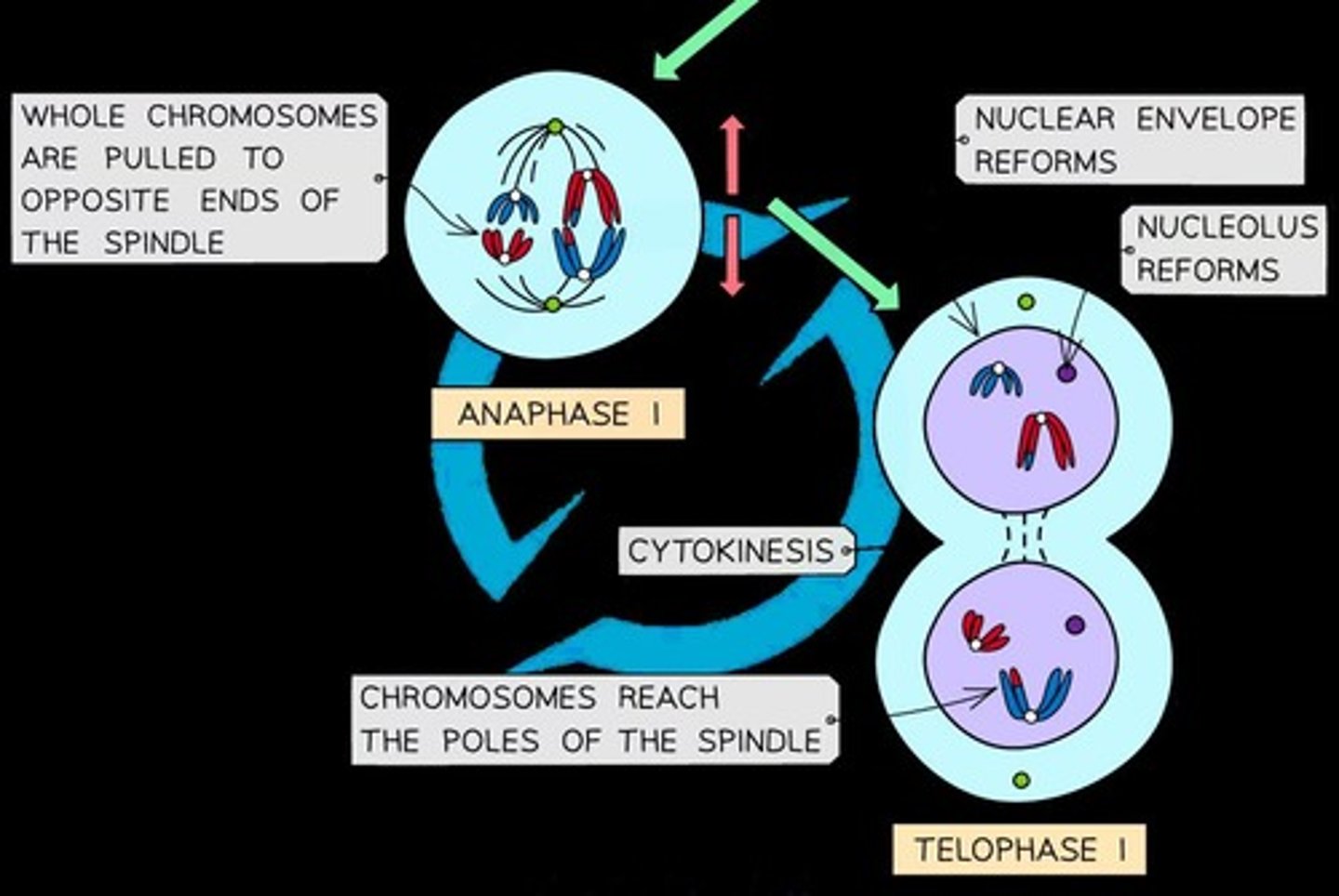
How does cytokinesis differ in animal and plant cells?
In animal cells, the membrane pinches inwards creating a cleavage furrow; in plant cells, vesicles form a cell plate that develops into the cell wall.
What is the outcome of meiosis I?
Two haploid cells are produced.
What is the significance of meiosis II?
Meiosis II is similar to mitosis and results in the separation of sister chromatids, creating four haploid cells.
What happens during Prophase II?
The nuclear envelope breaks down, and chromosomes condense, with a spindle forming at a right angle to the old one.
What occurs during Metaphase II?
Chromosomes line up in a single file along the equator of the spindle.
What happens during Anaphase II?
Centromeres divide, and individual chromatids are pulled to opposite poles.
What is the outcome of Telophase II?
Nuclear membranes form around each group of chromosomes, and cytokinesis divides the cytoplasm, resulting in four haploid cells.

How do we count chromosomes?
By the number of centromeres present; for example, 46 chromosomes correspond to 46 centromeres.
What is crossing over?
The exchange of alleles between non-sister chromatids during meiosis I, resulting in new combinations of alleles.
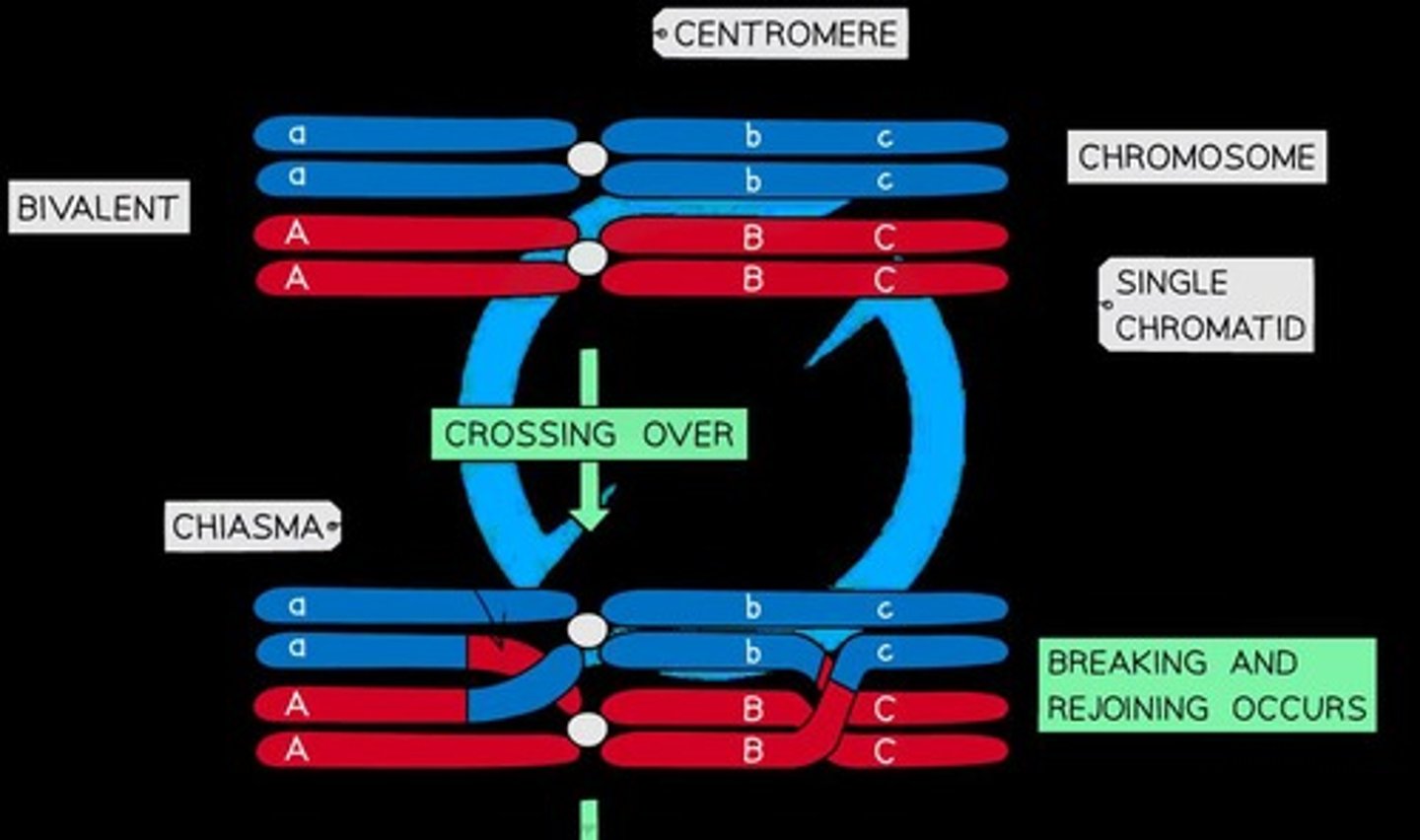
What are chiasmata?
The crossing points where non-sister chromatids entangle during crossing over.
What is independent assortment's effect on genetic variation?
It produces different combinations of alleles in daughter cells due to the random alignment of homologous pairs during metaphase I.

What is the formula for calculating different chromosome combinations due to independent assortment?
2^n, where n is the number of chromosomes in a haploid cell.
How many different combinations of chromosomes can humans produce?
8,324,608 different combinations.
What is the role of random fusion of gametes in genetic variation?
It creates unique combinations of alleles in zygotes during fertilization.
What is the likelihood of genetically identical organisms resulting from sexual reproduction?
There is an almost zero chance of individual organisms being genetically identical.
What can also cause genetic variation on a smaller scale than chromosomes?
Mutations can occur within genes.
What can random mutations during DNA replication lead to?
The production of new alleles and increased genetic variation.
What is the main characteristic of specialised cells in multicellular organisms?
They become specialised for specific functions.
What are two examples of structural adaptations in specialised cells?
The shape of the cell and the organelles the cell contains.
What is the function of erythrocytes (red blood cells)?
To transport oxygen around the body and carbon dioxide to the lungs.
How does the biconcave shape of erythrocytes benefit their function?
It increases the surface area available for oxygen absorption.
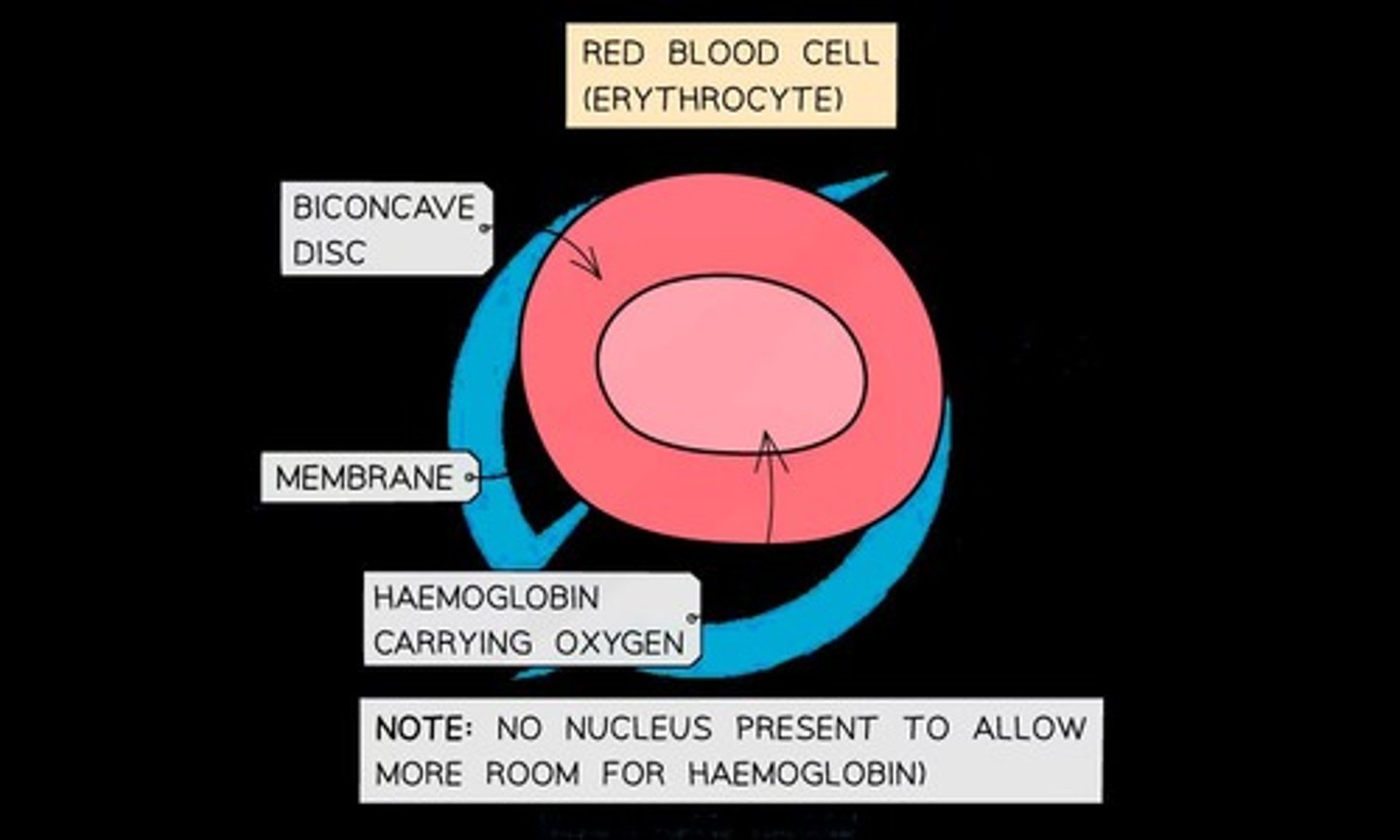
What pigment is found in erythrocytes that binds to oxygen?
Haemoglobin.
What is a key adaptation of neutrophils for their function?
They have a very flexible shape that allows them to squeeze through cell junctions.
What is the primary function of neutrophils?
To destroy pathogens by phagocytosis and the secretion of enzymes.
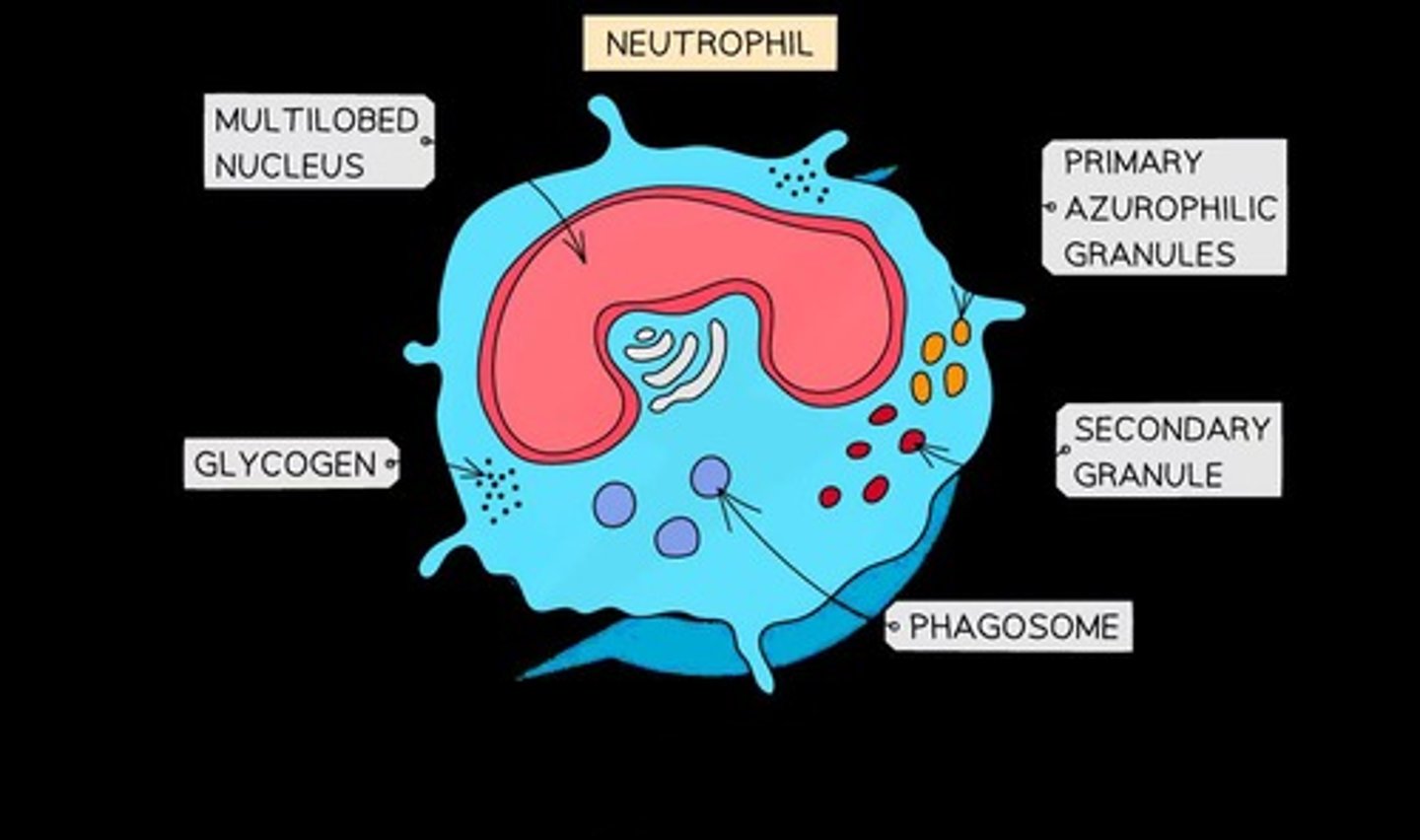
What adaptations do sperm cells have for reproduction?
A motile tail, a nucleus with half the normal number of chromosomes, and an acrosome with digestive enzymes.
What is the function of root hair cells?
To absorb water and mineral ions from the soil.
How do root hair cells increase their absorption efficiency?
They have extensions that increase the surface area in contact with the soil.
What is the role of ciliated epithelium?
To move substances across the surface of a tissue.
What do goblet cells in ciliated epithelium secrete?
Mucus, which traps dust, dirt, and microorganisms.
What is the structure and function of squamous epithelium?
It consists of a single layer of flattened cells that provide a surface covering and facilitate diffusion.
What is the primary function of palisade cells?
To carry out photosynthesis to produce glucose and oxygen.
What adaptations do palisade cells have for photosynthesis?
They have many chloroplasts and a tall, thin shape for maximum light absorption.
What is the function of guard cells?
To control the opening of the stomata for regulating water loss and gas exchange.
How do guard cells change shape to open or close the stomata?
Their inner cell walls are thicker, allowing them to bend when turgid.
What is a tissue in the context of multicellular organisms?
A group of specialised cells that work together to perform a particular function.
What is the significance of the cytoplasm in root hair cells?
It contains a permanent vacuole that helps maintain a water potential gradient.
What is the role of mitochondria in sperm cells?
To release energy for tail movement through respiration.
What is the primary function of the flexible nuclear membrane in neutrophils?
To help the cell penetrate cell junctions.
What is the role of lysosomes in neutrophils?
To digest and destroy invading cells.
Why are chloroplasts not found in root hair cells?
There is no light for photosynthesis underground.
What is the function of the acrosome in sperm cells?
To contain enzymes that break down the outer layer of an egg cell.
What do epithelial cells group together to form?
Epithelial tissue, which functions to absorb food in the small intestine.
What is the function of muscle tissue?
To contract in order to move parts of the body.
What is the role of xylem vessel cells?
To transport water and dissolved ions from the roots to the leaves.
How do xylem cells adapt to their function?
They lose their top and bottom walls to form continuous tubes and are dead, allowing free movement of water.
What is the function of phloem vessel cells?
To transport dissolved sugars and amino acids.
What distinguishes phloem cells from xylem cells?
Phloem cells are made of living cells and retain some subcellular structures.